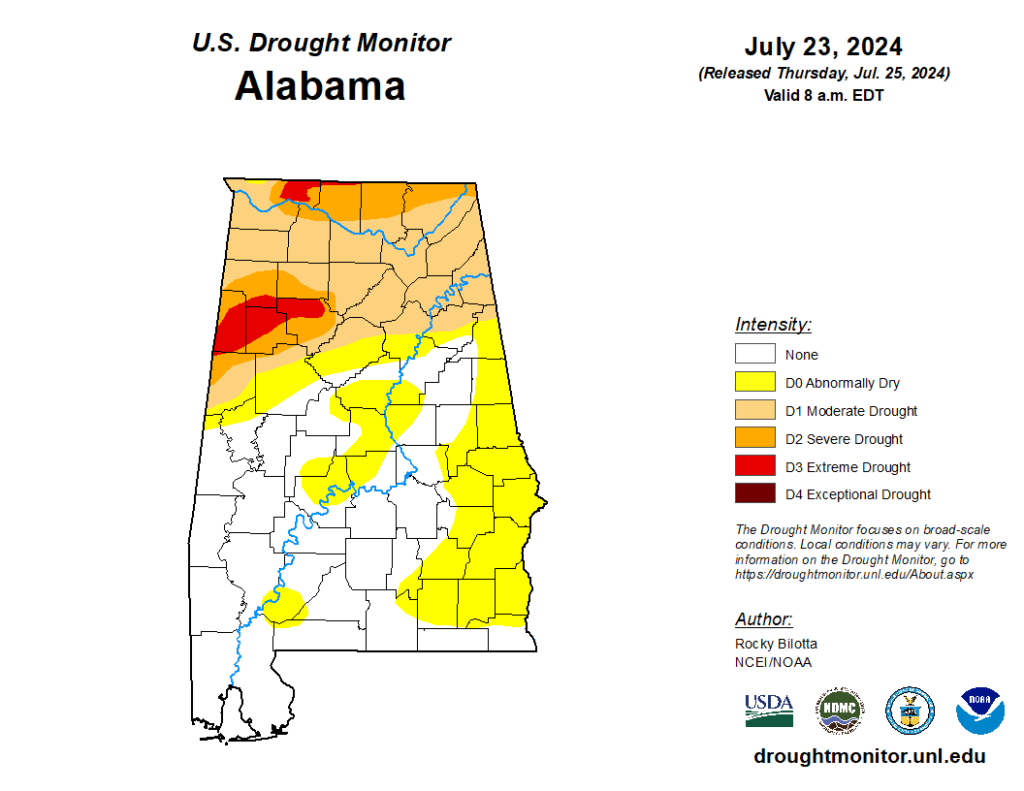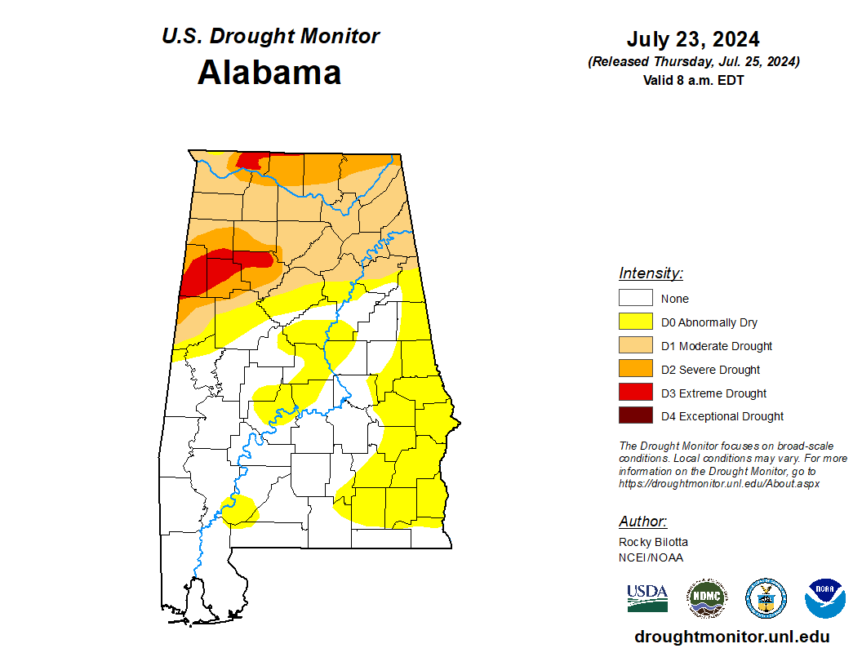
By Clint Thompson
Weather has been mostly dry in North Alabama in recent weeks, as evidenced by the recent release of the U.S. Drought Monitor. It has impacted fruit and vegetable production in the region.
Eric Schavey, regional Extension agent in Northeast Alabama, discussed what he has observed.
“In my area, we went 21 days without immeasurable rainfall. We’ve got a few tomato crops that are kind of suffering. They were in that range where they need to be putting on foliage. Even though we’re on drip, that heat it was causing because there was no evaporation happening, really caused some of them to set really good fruit and start sunburning,” Schavey said. “We have been getting some rains now, some typical summer showers but it’s very spotty. The other day I got like four-tenths at my house in about an hour, but five miles down the road got four inches.
“Peaches are coming in. We’ve got blackberries that are fading out. Blueberries are fading out. Okra stalled out because of the heat, and you know it’s hot when okra stalls.”
All of northern Alabama is experiencing dry conditions. They range from abnormally dry, mostly in the north-central part of the state, to extreme drought. Schavey’s coverage area is mostly in a moderate drought.
Tomatoes
The heat was especially rough on the region’s tomato crop.
“Certain varieties had a heavy core in them. A little bit of excess nitrogen and the heat where that plant doesn’t get to translocate like it should, so it makes that tomato core up in the middle. We were seeing some of that,” Schavey said. “That’s not a good thing for someone that wants to pick tomatoes, put them on a truck and send them a couple of states away.”










